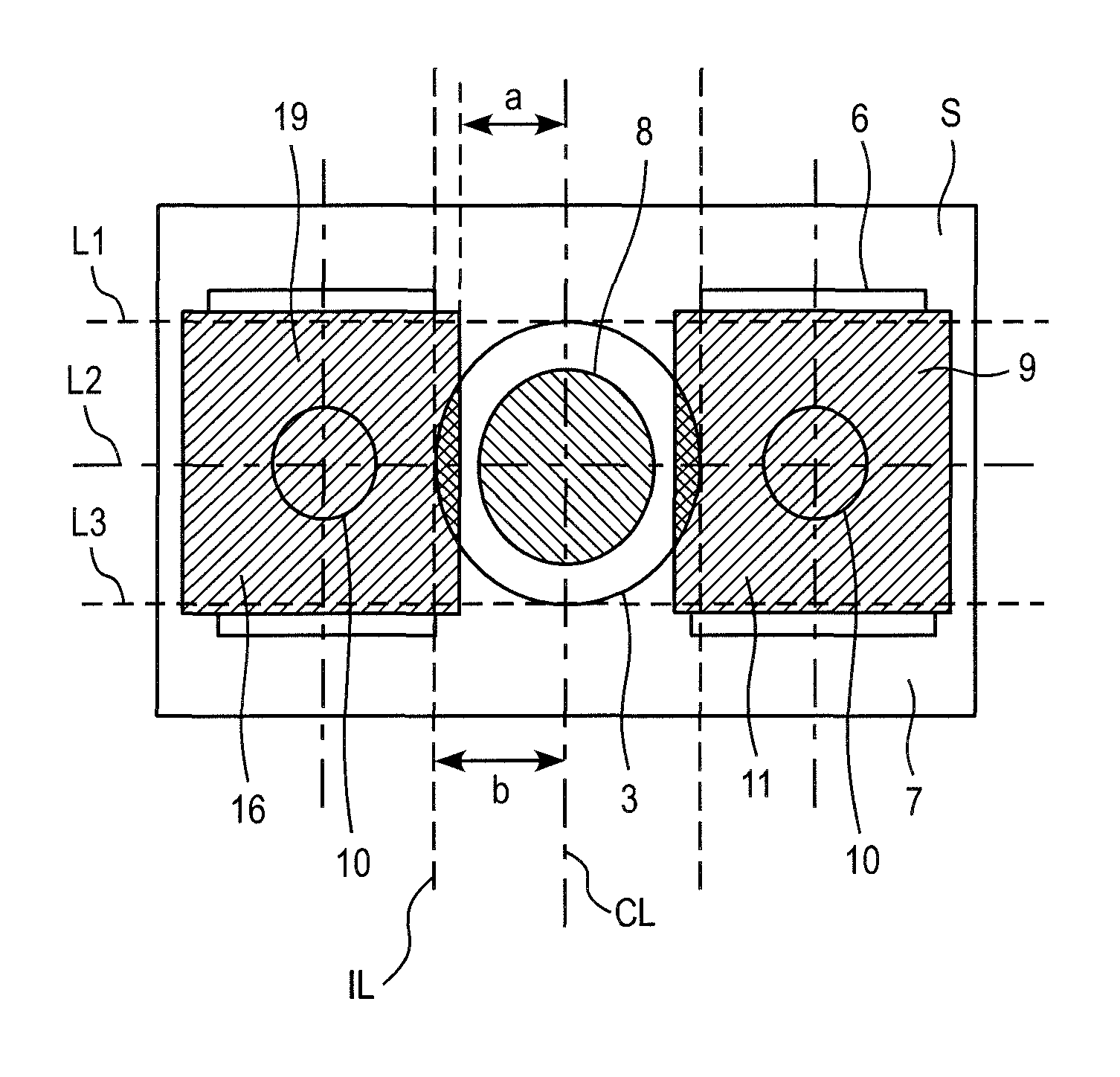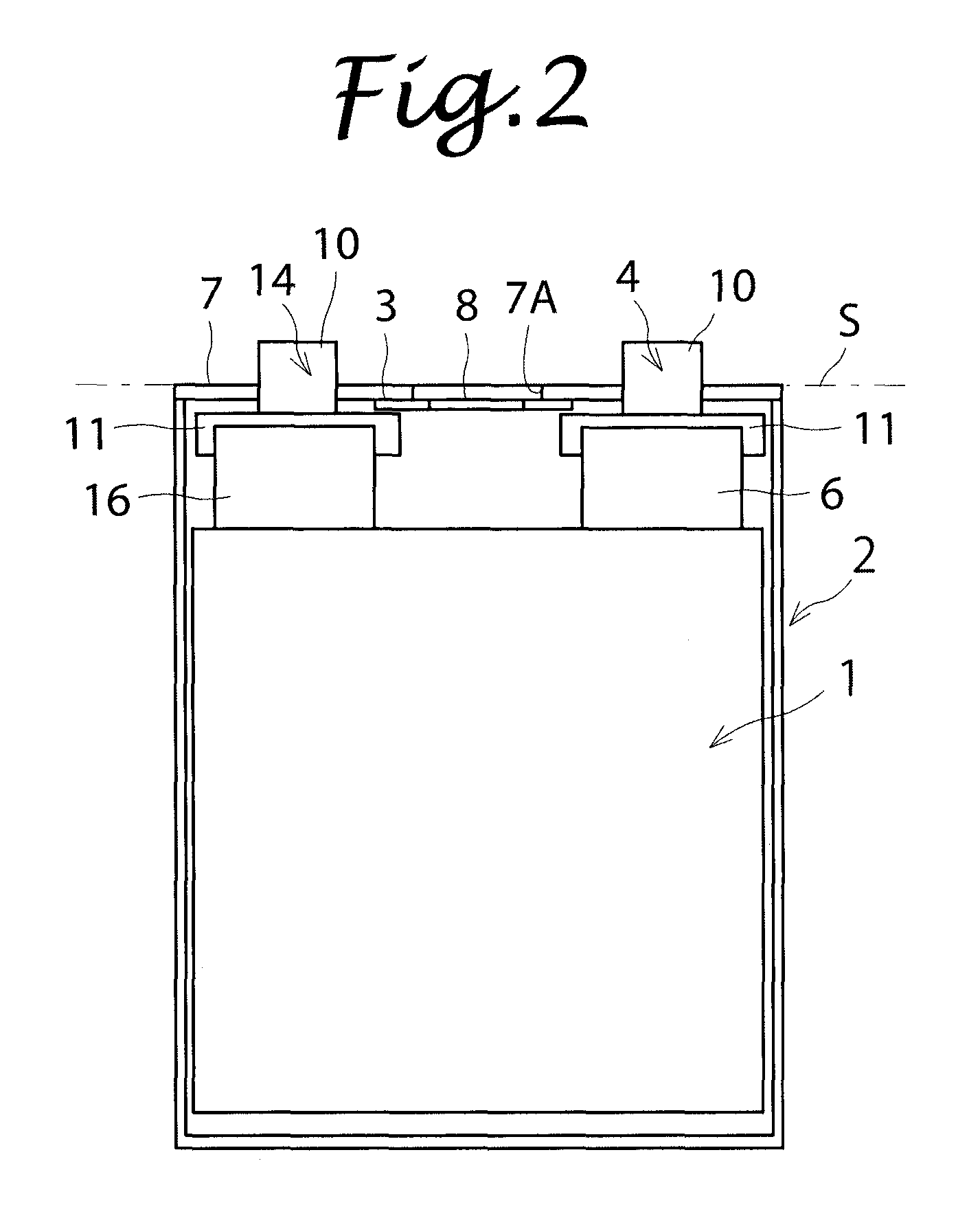Secondary battery
a secondary battery and battery case technology, applied in the field of secondary batteries, can solve the problems of increasing affecting the safety of secondary batteries, and causing greater damage than conventional batteries, and achieve the effects of high energy density, high capacity and high safety
- Summary
- Abstract
- Description
- Claims
- Application Information
AI Technical Summary
Benefits of technology
Problems solved by technology
Method used
Image
Examples
first embodiment
[0032]FIG. 1 is a projected view of a battery according to an embodiment of the present invention as viewed from the direction where a lid plate cab be seen. FIG. 2 is a transparent view of the battery of FIG. 1 as viewed from the direction where a side surface can be seen. A layered lithium-ion secondary battery with a battery capacity of 200 Ah is shown.
[0033]As shown in FIG. 2, an electrode group 1 includes a negative electrode having a rectangular negative current collecting member (copper) and a negative active material layer held on a surface of the negative current collecting member, a separator holding an electrolyte, and a positive electrode having a rectangular positive current collecting member (aluminum) and a positive active material layer held on a surface of the positive current collecting member. The positive electrode and the negative electrode are alternately layered via the separator. The dimension, such as the width, of the electrode group 1 and the number of pos...
second embodiment
[0041]FIG. 3 is a projected plan view of a battery according to a second embodiment of the present invention as viewed from above a lid plate 7′. The secondary battery according to the second embodiment is a lithium-ion secondary battery of a layered structure and with a capacity of 250 Ah which is 1.25 times larger than that of the battery according to the first embodiment. The capacity density has been improved by improving the positive and negative active material layers. The dimensions of the lid plate 7′ are the same as the lid plate 7 according to the first embodiment. In each of a positive output terminal member 4′ and a negative output terminal member 14′, a portion of a terminal base portion 11′ around a terminal portion 10′, which is a terminal for external connection that stands up vertically with respect to the lid plate 7′, is dented or curved toward the terminal portion 10′. A shadow area 8′ obtained by projecting the opening area of a safety valve 3′ in operation onto...
PUM
| Property | Measurement | Unit |
|---|---|---|
| battery capacity | aaaaa | aaaaa |
| internal pressure | aaaaa | aaaaa |
| pressure | aaaaa | aaaaa |
Abstract
Description
Claims
Application Information
 Login to View More
Login to View More - R&D
- Intellectual Property
- Life Sciences
- Materials
- Tech Scout
- Unparalleled Data Quality
- Higher Quality Content
- 60% Fewer Hallucinations
Browse by: Latest US Patents, China's latest patents, Technical Efficacy Thesaurus, Application Domain, Technology Topic, Popular Technical Reports.
© 2025 PatSnap. All rights reserved.Legal|Privacy policy|Modern Slavery Act Transparency Statement|Sitemap|About US| Contact US: help@patsnap.com



